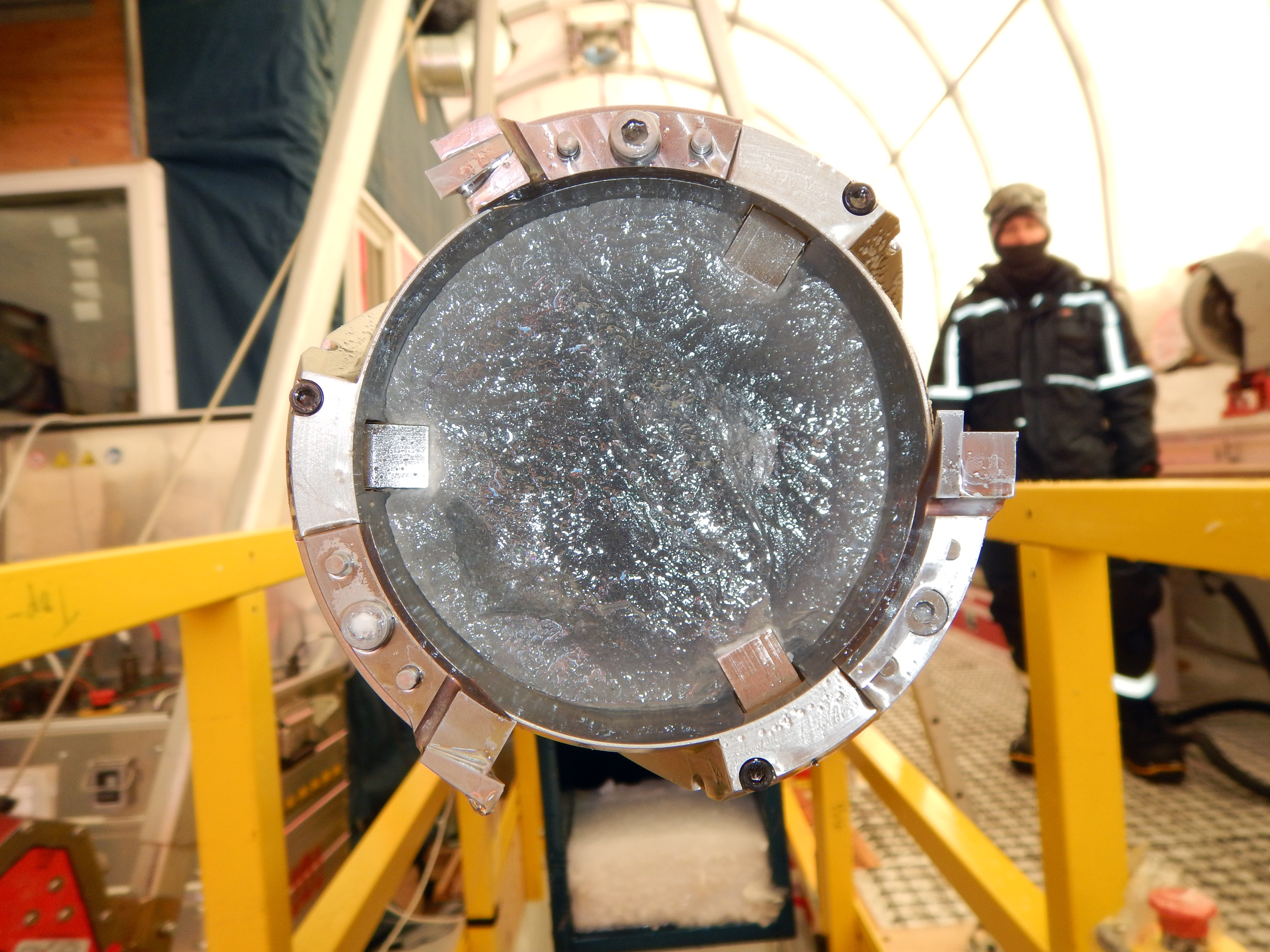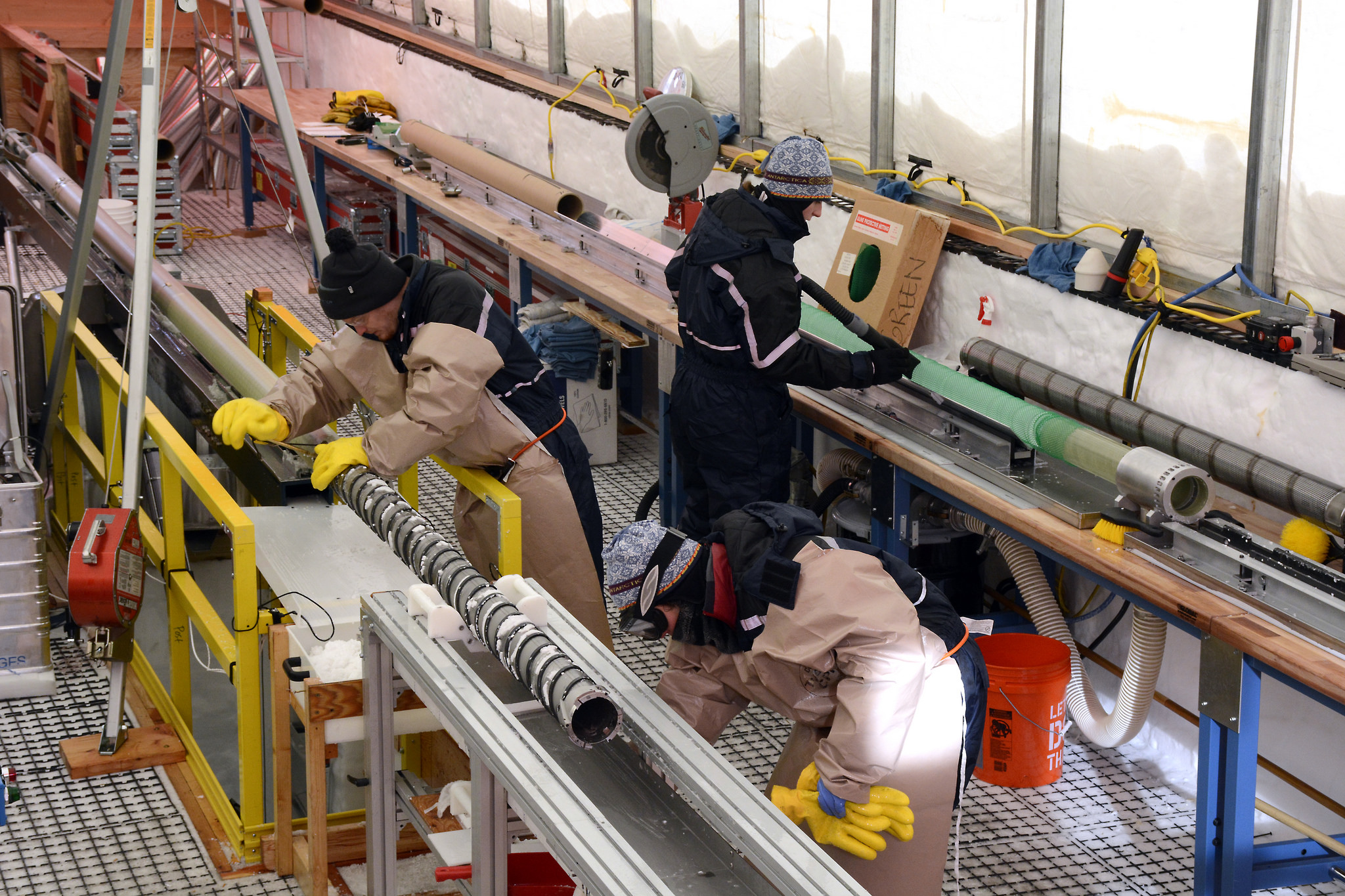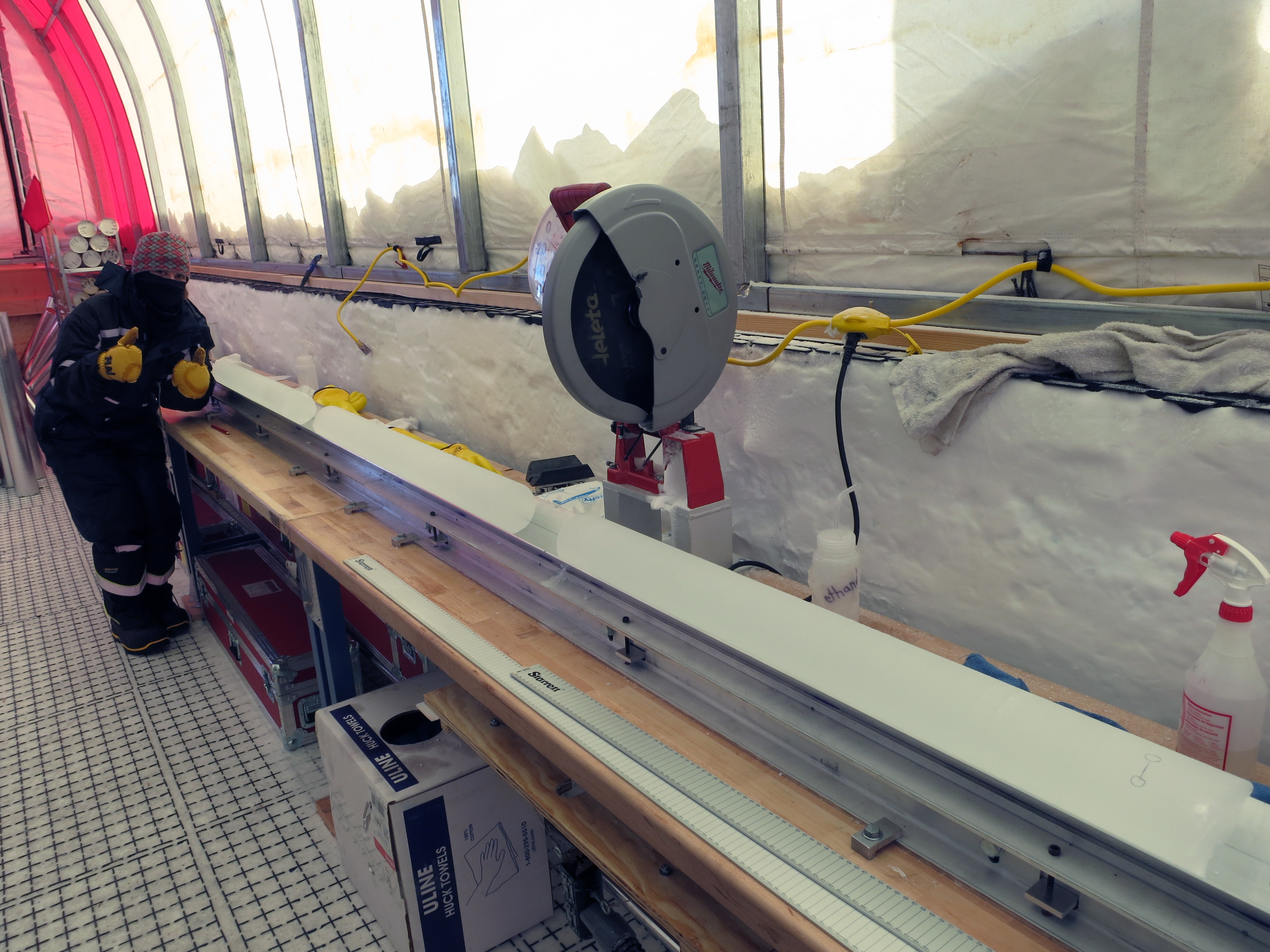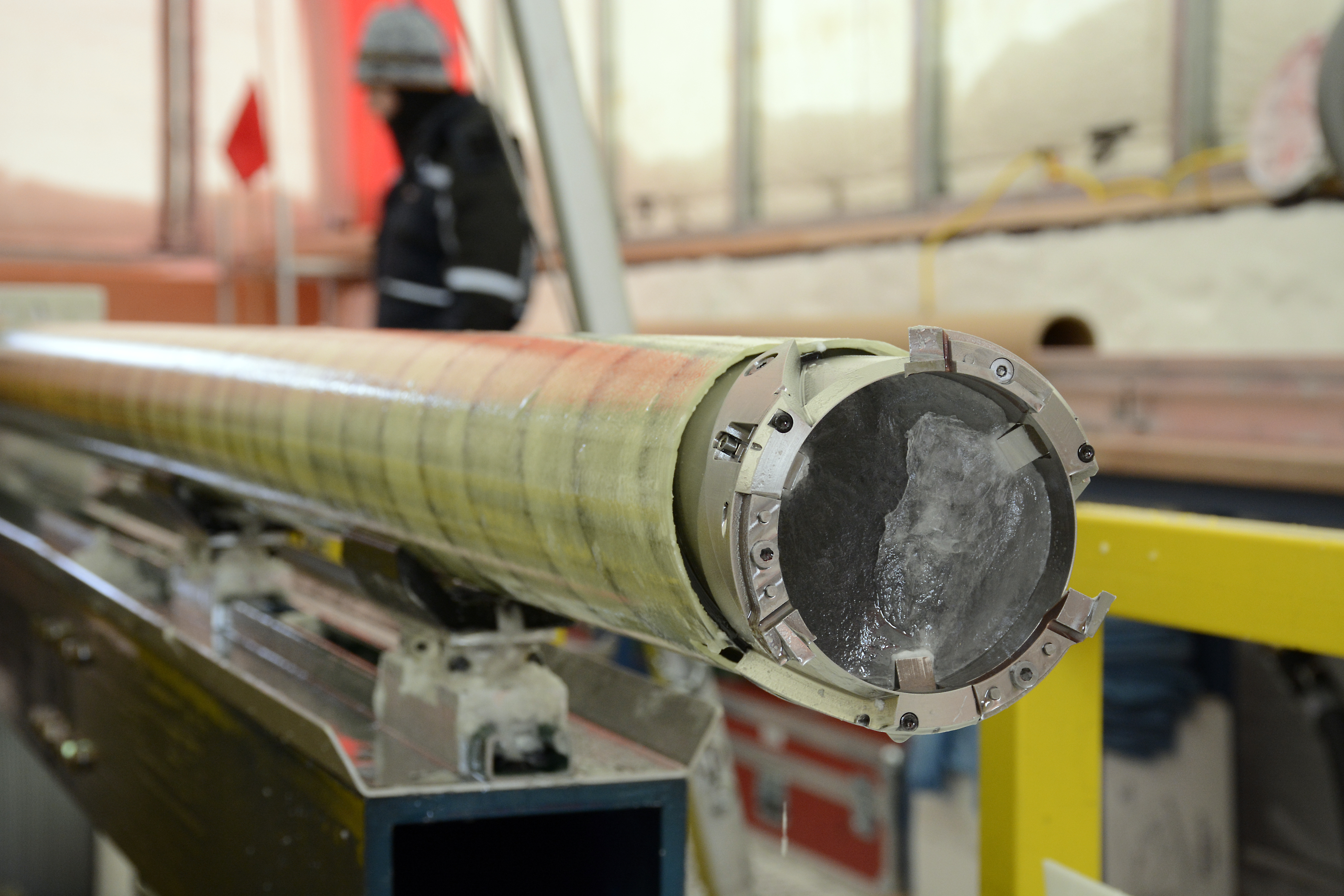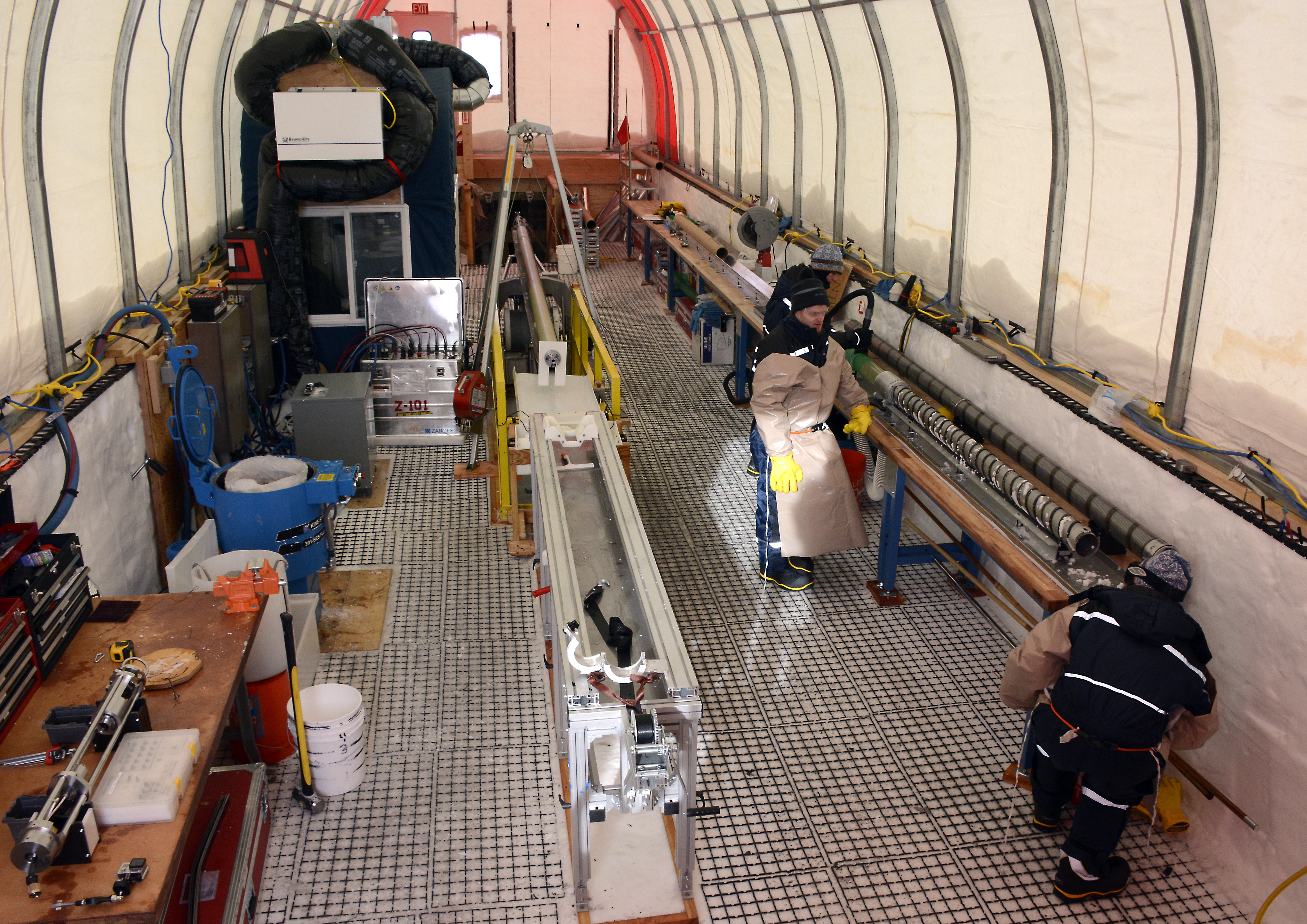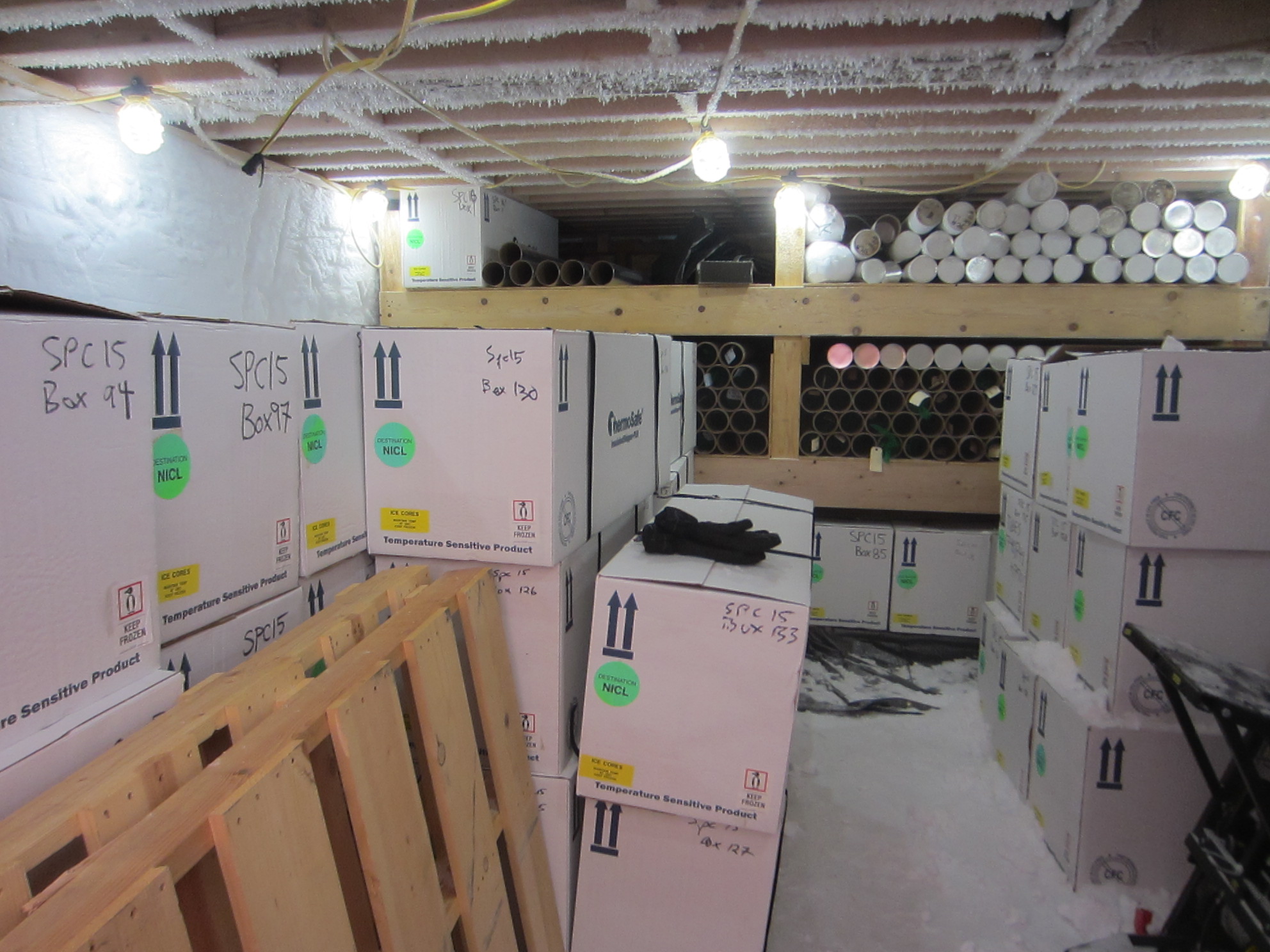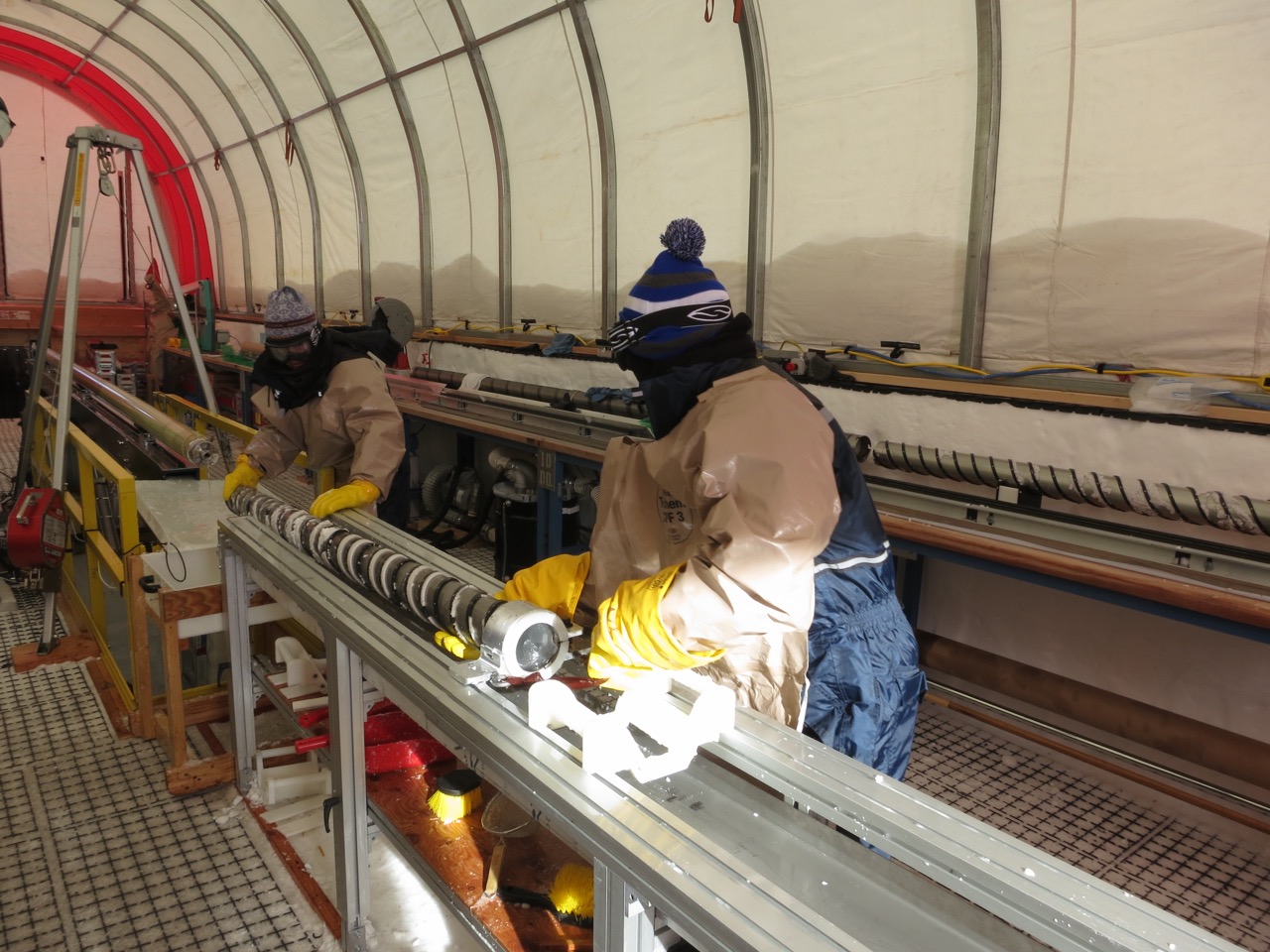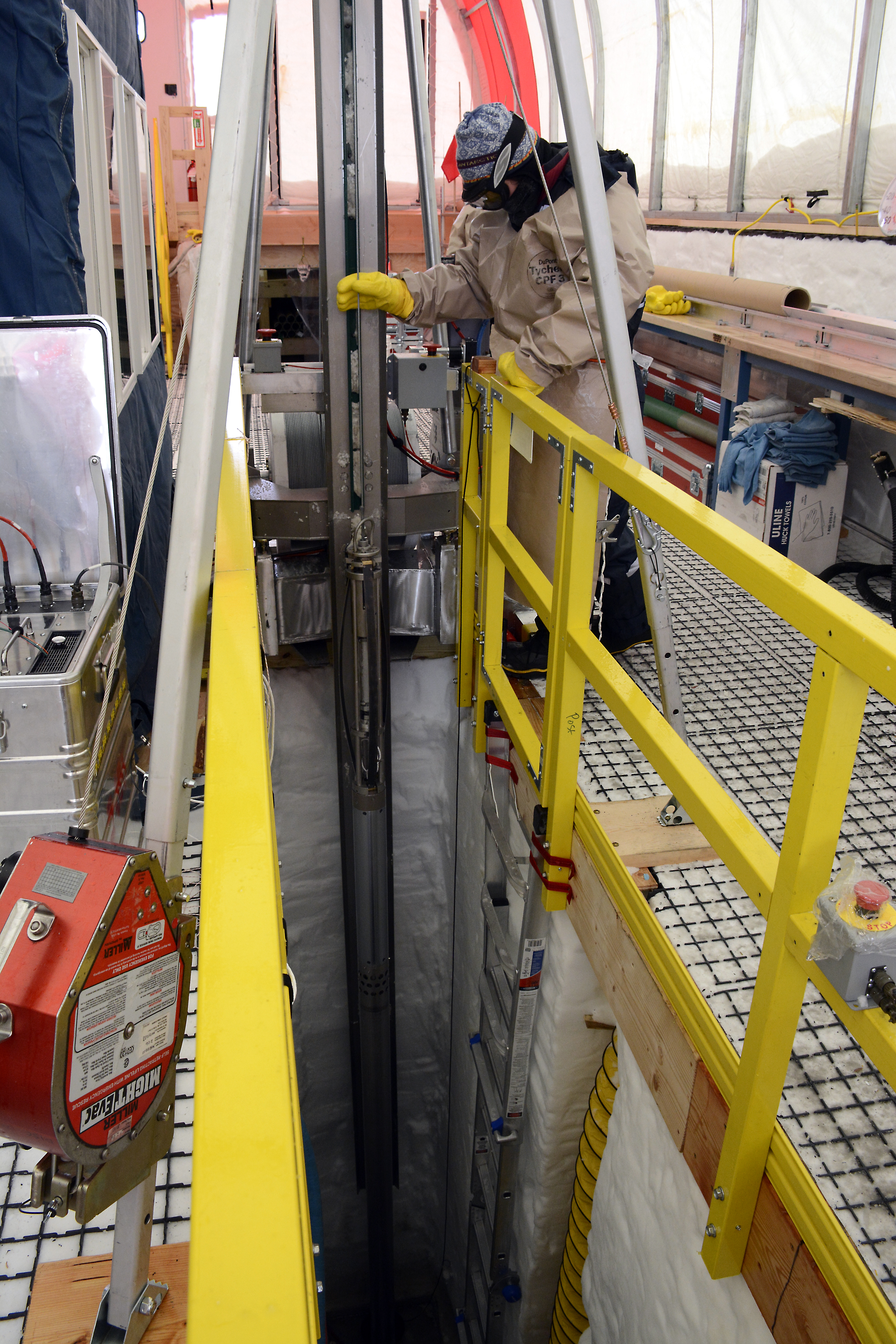The Foro 1650 Drill was previously referred to as the Intermediate Depth Drill or IDD. To learn more about this piece of equipment, visit the Foro 1650 Drill webpage.
Foro 1650 Drill
The very last run of ice from the South Pole Ice Core project inside the barrel of the Intermediate Depth Drill. The ice is from 1751 meters depth. Credit: Jay Johnson
The drill head of the Intermediate Depth Drill with a core inside the drill barrel. The rotating drill head contains three razor sharp cutters that shave out an annulus of ice, which the drill then slides down into. As the drill slides down into the annulus it slides over the core, which is 98 mm (3.86 inches) in diameter. When a cable pulls up the drill, three cams grab the core and break it free. After the drill is pulled back to the surface it is lowered from a vertical to horizontal orientation so that the ice core can be removed from the drill barrel. Credit: T.J. Fudge
Science team members work in the South Pole Ice Core drill tent, cleaning the drill and measuring ice cores. Credit: Peter Rejcek
Mindy Nicewonger at the core processing station inside the drill tent for the South Pole Ice Core project. The IDD recovers ice cores approximately 2-meters in length. The 2-meter long sections of core are then cut into 1-meter long sections so that they fit into the standard-sized insulated shipping container (ISC) boxes used by the US ice-coring community to transport ice cores. A dry-cut circular saw is used to make the cuts. Credit: Murat Aydin
Moving ice cores up out of the South Pole Ice Core project's core storage trench to ready them for transport to McMurdo Station. Credit: Jay Johnson
View of the inside of the South Pole Ice Core project's core storage trench after all of the 2-meter-long sections of brittle ice were cut into 1-meter-long sections and packed into the white ISC boxes. Credit: Joseph Souney
Cutting the 2-meter long sections of brittle ice into 1-meter long sections during the 2015-2016 summer field season of the South Pole Ice Core project. Credit: Jay Johnson


